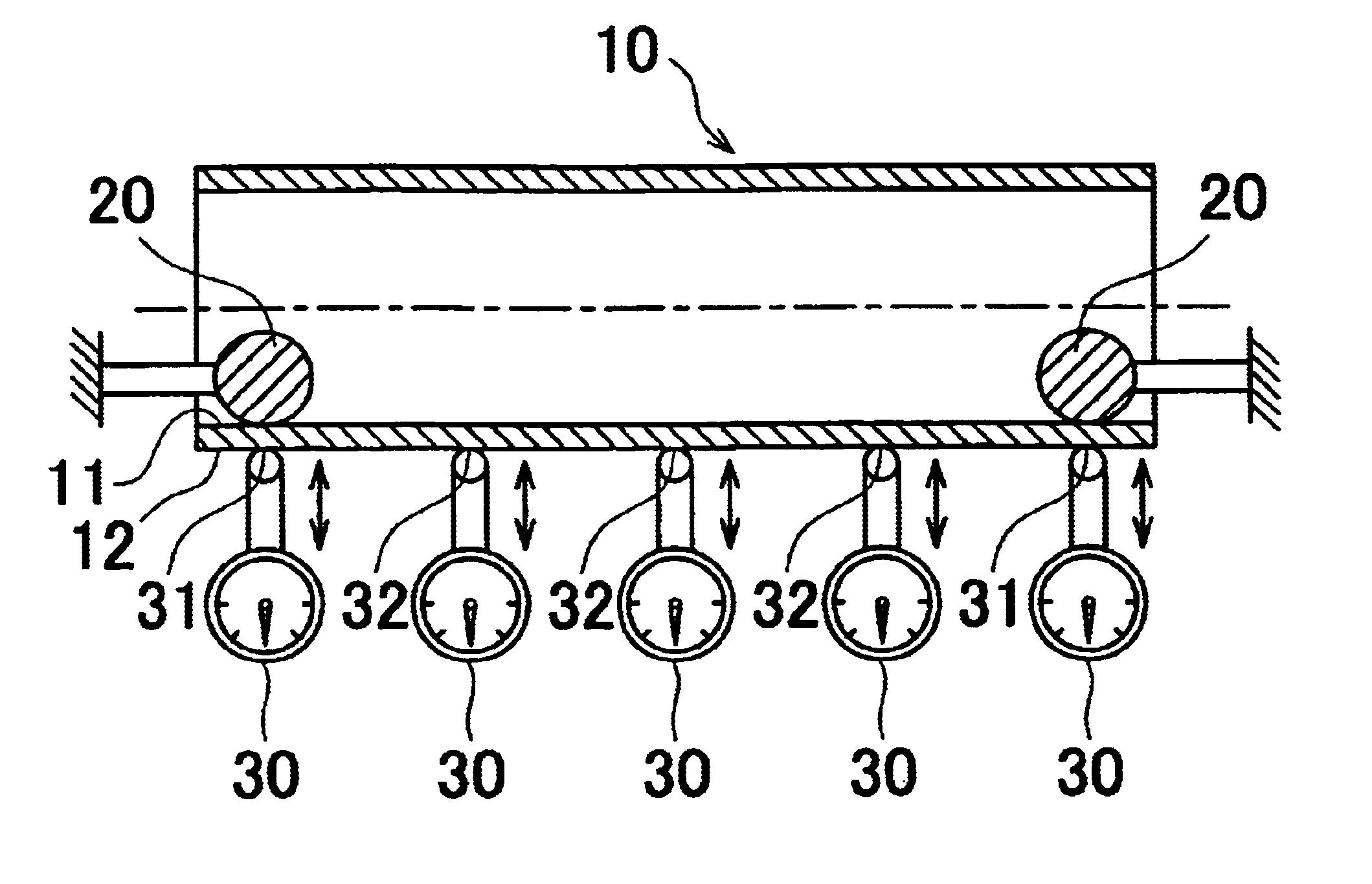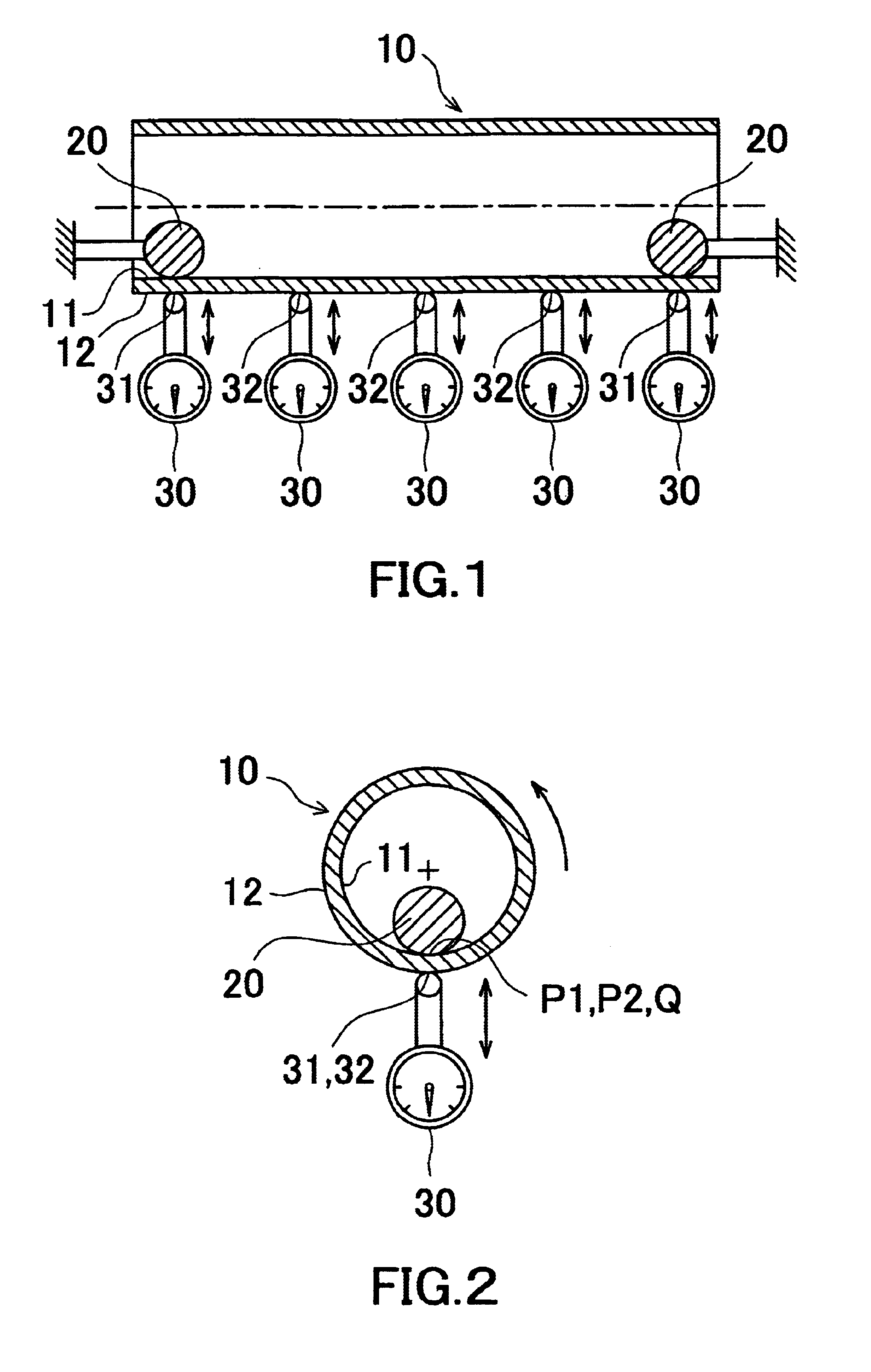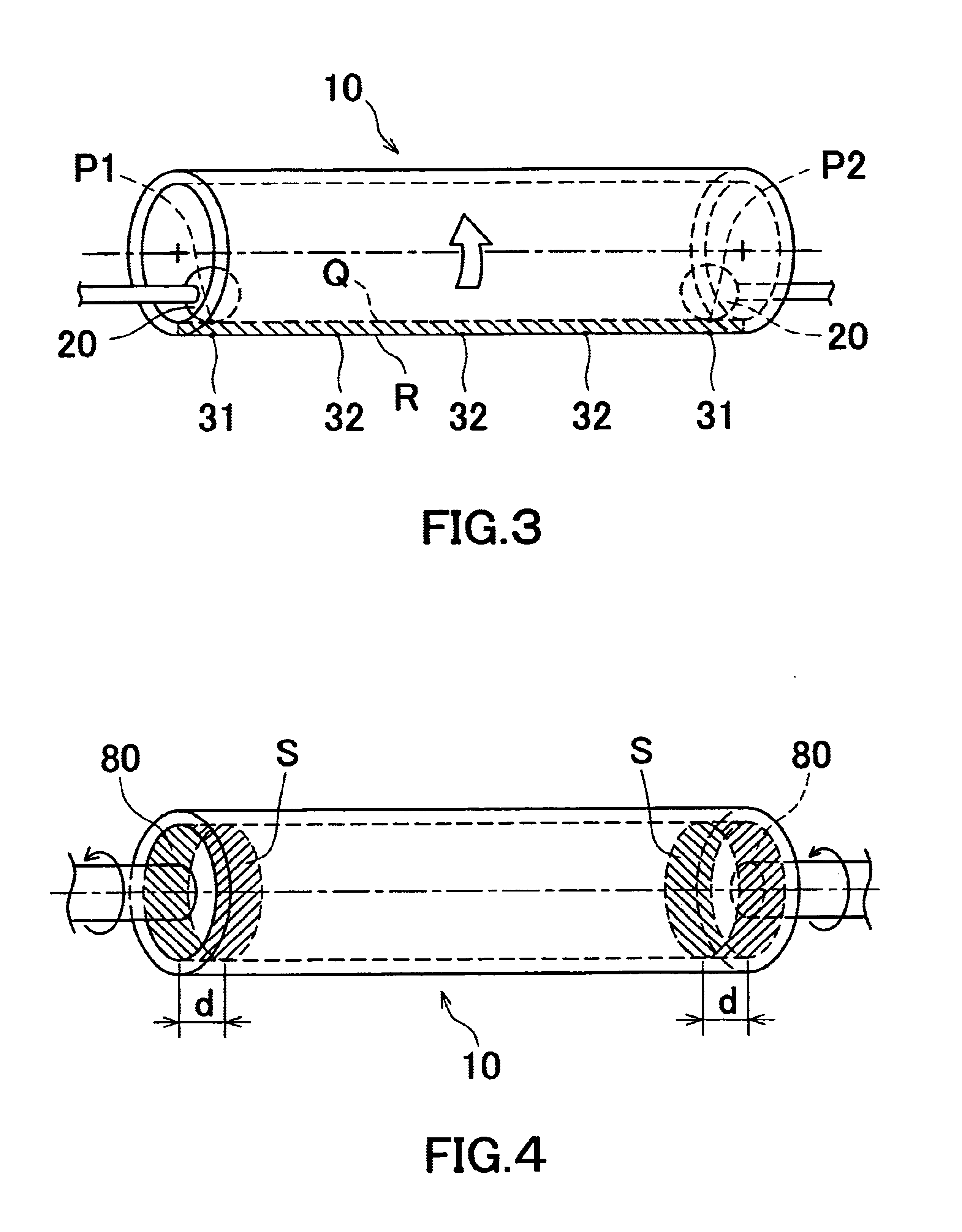Method and apparatus for measuring shape of tubular body
a tubular body and shape technology, applied in the direction of mechanical roughness/irregularity measurement, measurement devices, instruments, etc., can solve the problems of inability to disclose techniques capable of measuring the deflection of an external peripheral surface of a tubular body easily with high precision, and the time required for conducting the measurement can be shortened, and the effect of accurate shape measuremen
- Summary
- Abstract
- Description
- Claims
- Application Information
AI Technical Summary
Benefits of technology
Problems solved by technology
Method used
Image
Examples
embodiment 1
[Embodiment 1]
[0165]Hereinafter, as a first embodiment of an apparatus for measuring a shape of a tubular body which conducts a shape measurement of a tubular body based on the aforementioned principle, a manual type shape measuring apparatus 4 in which a tubular body (work) 10 is rotated by a measuring operator with his / her hand will be explained.
[0166]FIG. 12 is a plan cross-sectional view of the manual type shape measuring apparatus 4. FIG. 13 is a front cross-sectional view of the apparatus. FIG. 14 is a side cross-sectional view of the apparatus. FIG. 15 is a schematic perspective view of the apparatus. FIG. 16 is an explanatory view of the setting procedure of a tubular body (work) in the apparatus 4.
[0167]This shape measuring apparatus 4 is provided with a pair of reference portions 42 and 42 which come into contact with the internal peripheral surface 11 of the tubular body 10 to become shape measuring references, pedestal portions 44 which support the tubular body 10 from t...
second embodiment
[Second Embodiment]
[0227]Next, the second embodiment will be explained.
[0228]This second embodiment is directed to an automatic type shape measuring apparatus in which the tubular body 10 (work) is automatically rotated by the driving force of the shape measuring device to perform the shape measuring.
[0229]FIG. 17 is an entire schematic perspective view of this automatic type shape measuring apparatus 5. FIG. 18 is an enlarged perspective view showing the supporting structure of the tubular body 10 in the apparatus 5. FIG. 19 is a front cross-sectional explanatory view showing the principle portion of the apparatus 5. FIG. 20 is a side cross-sectional view showing the principle portion of the apparatus 5. FIG. 21 is a front cross-section showing the supporting status of the reference roller. FIG. 22 is a plane explanatory view of the tubular conveyance apparatus. FIG. 23 is a side explanatory view of the tubular conveyance apparatus.
[0230]This shape measuring apparatus 5 is provided...
third embodiment
[Third Embodiment]
[0293]Next, the third embodiment of the present invention will be explained.
[0294]In the third embodiment, the supporting rollers 54, etc., which are directly supported by the lifting cylinder 546 in the aforementioned second embodiment, are supported by a swing member 571 and a weight 574.
[0295]Hereinafter, the difference between this embodiment and the aforementioned embodiment will be explained, and therefore, cumulative explanation will be omitted by allotting the same reference numeral to the corresponding portion.
[0296]FIG. 26 is an enlarged perspective view showing the supporting structure for supporting the tubular body 10 according to the third embodiment. FIG. 27 is a front cross-sectional view showing the supporting state of the reference roller. FIG. 28 is a side view showing the supporting state of the supporting rollers.
[0297]As shown in FIG. 26, in this third embodiment too, the pair of reference rollers 52 and 52 come into contact with the lower pos...
PUM
 Login to View More
Login to View More Abstract
Description
Claims
Application Information
 Login to View More
Login to View More - R&D
- Intellectual Property
- Life Sciences
- Materials
- Tech Scout
- Unparalleled Data Quality
- Higher Quality Content
- 60% Fewer Hallucinations
Browse by: Latest US Patents, China's latest patents, Technical Efficacy Thesaurus, Application Domain, Technology Topic, Popular Technical Reports.
© 2025 PatSnap. All rights reserved.Legal|Privacy policy|Modern Slavery Act Transparency Statement|Sitemap|About US| Contact US: help@patsnap.com



